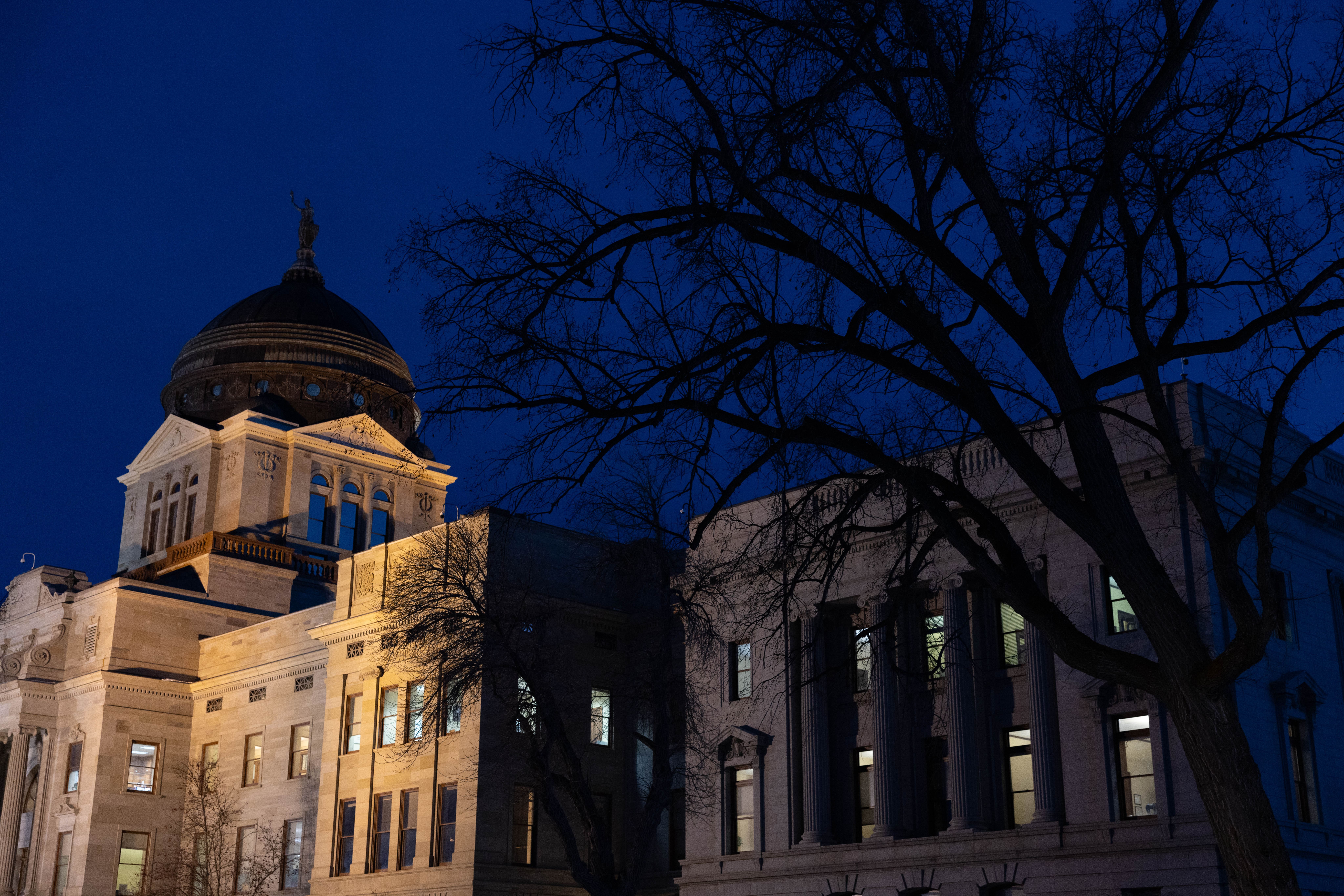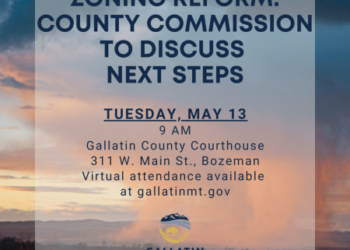Starting with the now-signed STARS Act, lawmakers this session took several big swings at addressing acute financial challenges in K-12 education.
By Alex Sakariassen MONTANA FREE PRESS
Montana’s high-profile STARS Act cleared its last hurdle in the policymaking process last week when Gov. Greg Gianforte signed the $100 million investment in starting teacher pay into law. Throughout the past five months, the bill had become emblematic of the Legislature’s debate over how best to fund public education, its price tag underscoring the scope of financial pressures weighing on the state’s K-12 school system.
In announcing the signing, Gianforte framed the STARS Act as “the next step in the right direction to support our educators.” Rep. Llew Jones, R-Conrad, proclaimed the funding enhancements he shepherded into the bill would “ensure that Montana schools can recruit and retain high-quality beginning teachers.” Democrats were less optimistic, with House Minority Leader Katie Sullivan, D-Missoula, telling reporters April 30 that the STARS Act “does not necessarily meet the moment,” but nonetheless contributed unanimous support to the bill’s passage through the Legislature’s two chambers.
As prominent a role as the STARS Act played in the 2025 Legislature, it was far from the only example of legislators manipulating an array of mechanisms to address the needs of Montana’s roughly 400 public school districts. Public school advocates have characterized this year’s session as among the most significant for education funding in at least three decades, and a close look at several policies reveals how lawmakers have adjusted not only the amount of money flowing to classrooms, but how the money gets there.
Beginning with the STARS Act, a main feature of public school budgets will be a doubling of what’s known as a “quality educator payment” — one of five state-funded components of Montana’s education funding formula that contribute to the base amount each district receives for core operations. Districts that raise their starting teacher salaries to match a certain percentage of their average teacher pay will qualify for twice the amount of state funding they’d normally receive through the quality educator payment, a provision that goes into effect immediately. STARS further incentivizes those salary increases by expanding quality educator payments to include other licensed positions on district payrolls, meaning districts can get additional funding for clerks, librarians, counselors and teachers who don’t yet qualify for full certification but are working under emergency authorizations.
The potential boost in state funds associated with that change was enough to prompt a series of anticipatory raises in the Kalispell public schools late last year, and Superintendent Matt Jensen recently told Montana Free Press the district is in a good position now to qualify for the extra funding. Other districts around the state will be looking at their own numbers in the coming months as they negotiate salary adjustments with their local union shops. In Bozeman, Superintendent Casey Bertram said his district is “pretty darn close” to the threshold set in STARS, and that starting teacher pay is a particularly important consideration in the city’s schools now.
“We have a bigger recruitment issue than we have the retention issue, primarily tied to a variety of things, but cost of living is a big one,” Bertram said. “So we are looking to do what we can to bring up that starting teacher salary to be near the top in the state of Montana.”
Amanda Curtis, president of the Montana Federation of Public Employees, said Montanans should have a clearer grasp by this fall of how many districts are able to meet the starting salary benchmarks laid out in the STARS Act. While appreciative of the increased funding from the state, Curtis also voiced caution on behalf of the state’s largest union about the outsized focus on early-career teachers, arguing that the financial realities for veteran educators shouldn’t be lost in discussions about how to qualify for and spend additional state dollars.
“Hopefully they’re a little past living paycheck to paycheck, hopefully they have some kind of savings,” Curtis said. “But these are not rich people. For the job market to require an incredible increase in pay for brand-new employees, whether we’re talking about education or anywhere else, there is always a feeling by folks of, ‘I’ve been here 25 years, why am I not getting rewarded for my 25 years of service when this person with zero experience or maybe one year of experience is getting a $10,000 a year raise?’ It doesn’t feel fair.”
For Curtis, how successfully districts balance the raises incentivized by STARS with the need to support more experienced staff hinges on local discussions with “as many people involved as possible.”
The Quality Educator Payment isn’t the only mechanism within Montana’s education funding formula revisited under STARS. The law also adds a sixth component to the blend of state dollars flowing to public schools. The “future ready payment,” a new addition to the formula, will reward districts with fixed amounts for each student who receives a certain number of credits from dual enrollment or trades-based courses prior to graduating. The change won’t go into effect until 2027, a lag designed to give Montana’s Office of Public Instruction and others time to ensure accurate data on student achievement. Budget analysts estimate the future ready payment could generate as much as $2 million a year in additional state funding for public schools.
Both STARS-enacted changes have already begun to factor into local budget calculations, as evidenced by Kalispell’s negotiated raises ahead of the 2025-26 school year. Kalispell also passed its first high school operating levy increase in 18 years this month, a critical step in preserving the district’s existing staffing and instructional programs. Jensen acknowledged that near-term budget deficits could make it more difficult for a district like his to continue supporting the kinds of courses and pathways that will eventually qualify it for future ready payments — a challenge that the levy’s recent success has helped alleviate.
“If it’s an internship experience, whether it’s paid or unpaid, or if it is a college-concurrent enrollment that’s on their way to an associate’s degree, that’s where we’re putting our energy,” Jensen told MTFP, “and the levy will help continue that effort to build those programs.”
In recognition of that challenge, the STARS Act includes roughly $100,000 annually to help districts maintain collegiate- and career-centric offerings through the state’s existing Advanced Opportunities grant program.
Though a good chunk of state education funding flows to districts via the funding formula, public schools rely on a number of other revenue streams that lawmakers tried to improve on. One such change focused on the local share of that funding: dollars levied from property taxpayers. Under House Bill 156, signed by Gianforte on May 5, those non-voted levies will be collected on a countywide rather than a district-specific basis starting next year.
Rep. David Bedey, the Hamilton Republican who carried the measure, argued throughout the session that such an approach would help redistribute the pressure of local education tax collections across a wider share of taxpayers. Speaking with MTFP this week, Bedey said the resulting reductions will be modest — an average of about 3 mills — but added that they are poised to predominantly impact areas of the state with high concentrations of students. For example: calculations based on 2025 tax year data showed reductions in the number of mills levied for every district in Ravalli County.
Bedey also noted that HB 156 effectively erases the need for local tuition levies, which are collected to help make up the loss of per-student state funding when a student living within one district’s jurisdiction transfers to another district.
“Most students that are attending out-of-district are staying in the same county,” Bedey said, adding that the complications of trying to address situations where a student transfers out of their resident county was “just a bridge too far. That could be something to be done in the future, but we decided to leave that particular issue alone.”
HB 156 does not affect the voted operating levies that appear on school election ballots in spring, which must be approved for districts to draw down more than the 80% of base state education funding guaranteed in law, and which will remain district-specific.
Also impacting non-voted sources of local education funding is House Bill 483, which was awaiting action by the governor as of May 12. The measure focuses on distribution of the so-called 95 mills, a pot of state education money levied at the county level to help equalize funding between tax-base-rich and tax-base-poor districts. Rep. Courtenay Sprunger, R-Kalispell, told MTFP late last month that one of her primary goals in carrying the bill was to utilize excess collections from the 95 mills to help drive down the cost of local support for teacher retirement and school transportation — critical elements of the education funding picture that can prove expensive for local taxpayers.
“You’ll see those line items right on your tax bill, and it’s going to start pushing those down,” Sprunger said. “In conjunction, in the first year, we’ll see between $50 and $60 million across the state in relief.”
Sprunger added that as property values — and, as a result, collections via the 95 mills — continue to rise over the next decade the funding directed back toward non-voted levies is projected to provide as much as $100 million in local relief. She said HB 483 should be particularly helpful in readjusting a growing inequity in the state’s contribution to local school transportation needs. She estimated the state currently covers roughly 25% of those costs. Under HB 483, that state share will increase a 50-50 match.
It’s unclear to what degree Sprunger’s measure would be impacted by lawmakers’ efforts outside the education funding debate to provide broader relief for residential property owners on their tax bills. Also unknown is the extent to which this session’s manipulation of Montana’s school funding mechanisms will be affected by an upcoming study of the state formula itself. That review, conducted every 10 years by a commission of legislators, statewide officials and appointed members of the public, loomed large over the 2025 Legislature’s proceedings. Curtis speculated it became “an excuse at times” for legislators not to pursue more ambitious changes to funding for public schools. She said the teachers she represents will be vocal participants in the review process at every available opportunity.
By Bedey’s estimation, those opportunities should be numerous. He said the commission’s work is slated to kick off as early as next month, and as a likely member — given his position at the Legislature’s education budget committee chair — he believes the logical starting point will be to discuss not how Montana funds its public schools for the next decade, but what the state expects from public schools. Bedey also noted that the commission won’t have the benefit of hard data on the impacts of the Legislature’s latest changes. Instead, he said, lawmakers will have to rely on legislative analysts to forecast potential outcomes and draw the best conclusions they can.
“Once we know what’s actually put into law, we’re just going to have to model the impacts,” Bedey said. “You can’t do any better than that.”













